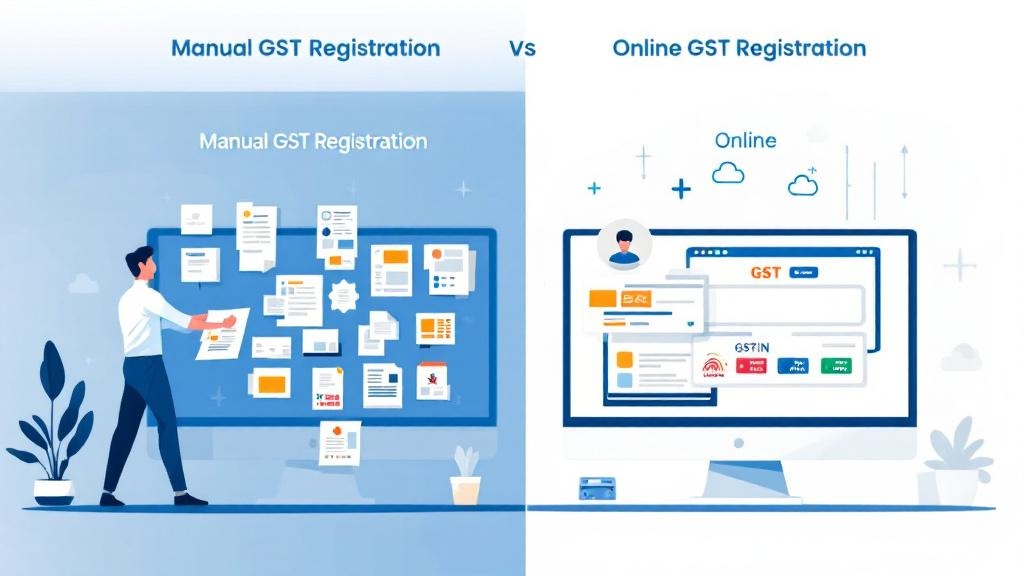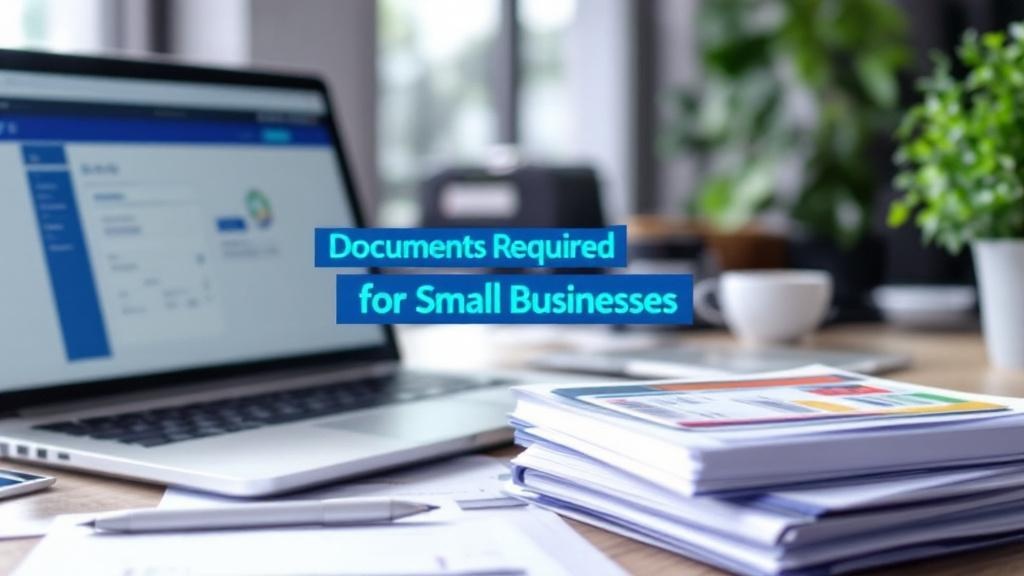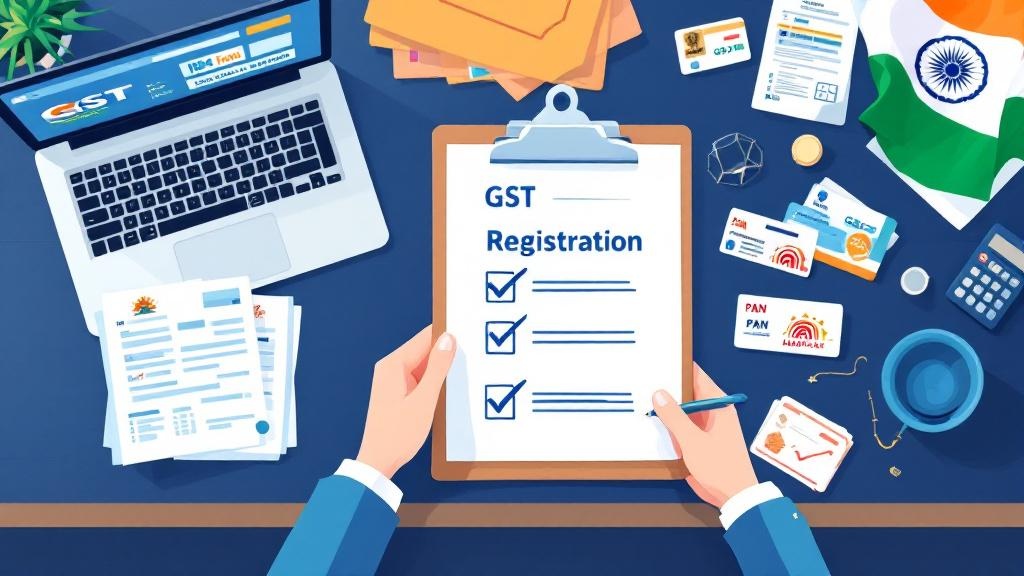Whether you’re launching a new business or scaling an existing one, GST registration is a crucial step you can’t afford to overlook. In 2025, the Goods and Services Tax (GST) framework in India continues to evolve, simplifying compliance and digital integration. But navigating the process can still be overwhelming if you’re not sure where to start.
In this guide, we’ll walk you through the step-by-step GST registration process, outline the documents required, and answer some frequently asked questions. Whether you’re a freelancer, startup founder, or small business owner, this article is designed to make GST registration easy to understand and implement.
What is GST Registration?
GST (Goods and Services Tax) is a unified indirect tax that replaced various state and central taxes in India. If your business exceeds a certain turnover threshold or falls under specific categories, you’re legally required to register for GST.
Under the GST Act, any individual or business supplying goods or services above the prescribed turnover limit must register. As of 2025, the thresholds remain:
-
₹40 lakh for suppliers of goods (₹20 lakh in some special category states)
-
₹20 lakh for service providers (₹10 lakh in special category states)
To learn more about professional GST services or get help with your application, you can visit Fintax24’s GST portal for detailed support.
Who Needs to Register for GST in 2025?
Here’s a quick checklist of businesses and professionals who are mandated to register for GST in India:
-
Businesses exceeding turnover thresholds
-
E-commerce sellers and aggregators
-
Inter-state suppliers
-
Casual taxable persons
-
Non-resident taxable persons
-
Input service distributors (ISD)
-
Agents of a supplier
-
Businesses under reverse charge mechanism
-
Online service providers from outside India selling in India
Benefits of GST Registration
Still wondering why GST registration matters? Here are some compelling benefits:
-
Legitimacy: Gives your business legal recognition and builds trust with clients and suppliers.
-
Input Tax Credit (ITC): Allows you to claim ITC on purchases, reducing your overall tax burden.
-
Competitive Advantage: Enables seamless B2B operations and participation in tenders or large contracts.
-
Compliance Ease: Makes tax filings more straightforward and digital.
Documents Required for GST Registration in 2025
Before you begin the application, make sure to gather the following mandatory documents. Requirements may slightly vary based on the type of business (proprietorship, partnership, company, etc.).
1. Proof of Business
-
Proprietorship: PAN Card and Aadhaar Card of the proprietor
-
Partnership Firm: Partnership deed, PAN & Aadhaar of all partners
-
Private Limited Company: Certificate of incorporation, MOA, AOA, PAN & Aadhaar of directors
2. Identity and Address Proof
-
PAN Card (mandatory)
-
Aadhaar Card
-
Passport-sized photographs (for individuals/owners/directors)
3. Business Address Proof
-
Ownership proof: Property tax receipt, electricity bill, etc.
-
Rent agreement and NOC (if rented)
-
Latest utility bill (not older than 2 months)
4. Bank Account Proof
-
Cancelled cheque
-
Bank statement
-
Passbook with account details
5. Digital Signature (DSC)
-
Mandatory for LLPs and companies
-
Not required for proprietorships
Step-by-Step GST Registration Process in 2025
Here’s how you can register for GST on the GST Portal (www.gst.gov.in):
Step 1: Visit the GST Portal
Go to www.gst.gov.in and click on “Register Now” under the Taxpayer tab.
Step 2: Fill Part A of the Application
-
Enter basic details like legal name, PAN, email, and mobile number.
-
Receive an OTP to verify email and phone.
-
Get a Temporary Reference Number (TRN).
Step 3: Complete Part B of the Application
Log in with your TRN to fill out Part B, which includes:
-
Business details
-
Promoter/Partner details
-
Authorized signatory
-
Principal place of business
-
Additional places (if any)
-
Goods and services supplied
-
Bank account details
-
Upload required documents
Step 4: Verification and Submission
-
Submit the application using either Digital Signature Certificate (DSC), e-Sign, or EVC (OTP based) depending on your entity type.
-
Once submitted, you’ll get an Application Reference Number (ARN).
Step 5: GST Number Allotment
-
The GST officer will review your application and may request additional documents.
-
If approved, you’ll receive a GSTIN (Goods and Services Tax Identification Number) and GST Registration Certificate in your email and on the portal.
Common Mistakes to Avoid
-
Mismatched PAN details – Ensure PAN matches the legal name.
-
Wrong business category – Select the correct taxpayer type.
-
Incomplete documentation – Always double-check required documents.
-
Inaccurate address – Utility bills or NOC should match the business location.
GST Registration Timeline in 2025
| Process | Time Taken |
|---|---|
| TRN Generation | Immediate |
| Form Completion | 1–2 days |
| Officer Review | Up to 7 working days |
| Certificate Issuance | 3–5 working days post-verification |
Total time: Approx. 7–10 working days, assuming no issues arise.
What Happens After You Register?
Once registered:
-
You’ll need to file GST returns (monthly, quarterly, or annually depending on your category).
-
Display your GSTIN at your business premises.
-
Issue GST-compliant invoices with HSN/SAC codes.
-
Maintain proper accounting records as per GST law.
For assistance with compliance or ongoing filing, consider consulting GST professionals or digital platforms like Fintax24, which offer end-to-end support.
FAQs on GST Registration in 2025
1. Is GST registration free?
Yes, registering for GST on the official portal is completely free. However, many businesses choose to hire experts to avoid mistakes.
2. Can I operate without GST registration?
If your turnover is below the threshold and you don’t fall into mandatory registration categories, you can operate without GST. However, opting in voluntarily can help claim input tax credits and expand your customer base.
3. Do freelancers and bloggers need GST registration?
Yes, if your income from services exceeds ₹20 lakh annually (₹10 lakh in special category states), you need to register.
4. What is the validity of GST registration?
Once granted, GST registration is valid until canceled or surrendered unless you’re a casual taxable person or non-resident taxable person, in which case the validity is limited.
Final Thoughts
GST registration might seem complex at first glance, but with the right information and a systematic approach, it’s manageable. Registering not only ensures compliance with Indian tax laws but also builds credibility with clients, suppliers, and partners.
If you’re looking to make the process even smoother, platforms like Fintax24 provide reliable GST registration and compliance services, helping you save time and avoid costly errors.
Whether you’re just starting out or expanding your operations in 2025, getting your GST registration done right is a smart move for any business in India.







Comments (0)